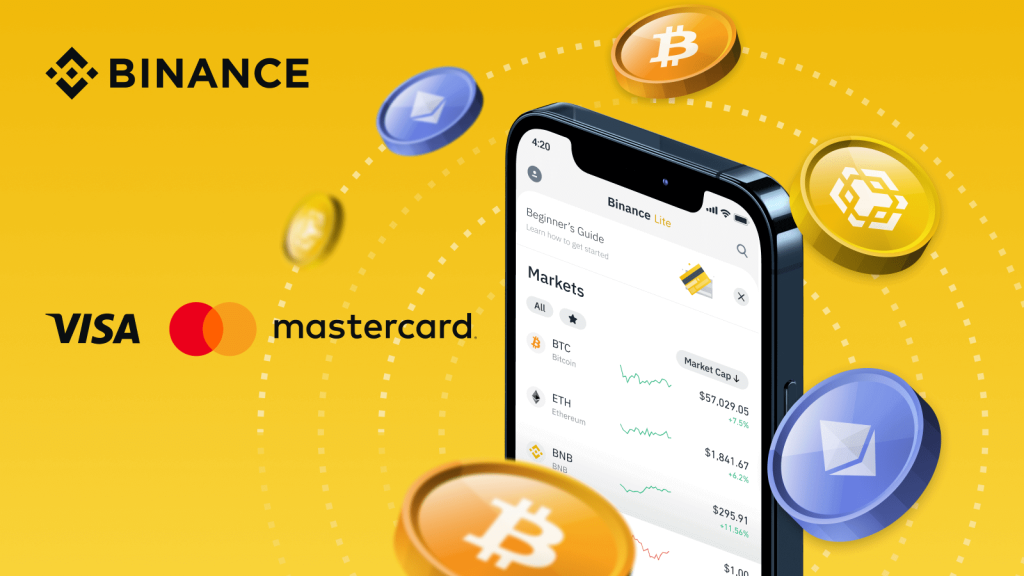Content Attributes
Crypto debit cards, like BitPay, allow users to spend their crypto like cash, with instant conversion to fiat currencies at the point of sale. On the other hand, money transfer apps like Cash App and PayPal offer convenient options for converting and selling crypto, although fees and limitations may vary. Both of these methods provide a seamless and user-friendly experience, making it easier than ever to access and use your crypto in the real world.
There are many ways to convert and spend your crypto, such as crypto debit cards and money transfer apps and even spending some portion of your crypto in BTC casinos. These options provide users with more flexibility and convenience when it comes to using their digital assets in everyday transactions.
Crypto Debit Cards: Spend Crypto Like Cash
Crypto debit cards, such as the BitPay Card, enable users to spend their crypto directly, converting it to fiat currency at the point of sale. This means that you can use your crypto balance to pay for everyday expenses, such as groceries, utilities, or even a cup of coffee. Crypto debit cards are gaining acceptance among retailers worldwide, with major payment networks like Visa partnering with crypto platforms to increase accessibility.

One of the key benefits of using a crypto debit card is that it allows users to:
- Bypass the need for converting their crypto into cash through exchanges or peer-to-peer platforms
- Simplify the process of converting crypto into cash by automatically converting it when making a purchase
- Reduce transaction fees associated with converting crypto into cash
However, it’s important to examine the fee details of each card and choose one that aligns with your needs.
Money Transfer Apps: Convenient Crypto Conversion
Money transfer apps offer another convenient option for converting and selling crypto. Popular apps like Cash App and PayPal have added support for cryptocurrencies, allowing users to sell their crypto directly within the app. These apps provide a user-friendly interface, making it easy for even novice users to navigate the process of converting their crypto into cash.
However, it’s necessary to understand the associated fees and limitations associated with using money transfer apps for crypto conversion. Each app may have different fees and transaction limits, so it’s essential to compare these factors before choosing the best option for your needs. Doing this can guarantee a seamless and cost-effective experience when cashing out your crypto.
Factors to Consider Before Cashing Out Crypto
Before cashing out your crypto assets, several factors need to be taken into account, such as taxes, fees, and your long-term investment goals. By understanding these factors and how they may impact your decision to cash out, you can make more informed choices and optimize your financial outcome. Keep in mind that you can always reinvest a portion of your profits into one of the move-to-earn projects and take advantage during the upcoming bull run.
It’s also wise to think about potential risks associated with cashing out large amounts of crypto. For instance, large transactions may attract the attention of banks and lead to blocked accounts due to suspicions of money laundering activities. To mitigate this risk, consider using a combination of methods and platforms for cashing out, and be mindful of the transaction limits on each platform.
Tax Implications: Reporting Gains and Losses
Understanding the tax implications of selling crypto is crucial, as it can impact your overall financial outcome. In most countries, crypto is viewed as property, and gains from selling or trading cryptocurrencies are subject to capital gains tax. Depending on the holding period of your crypto assets, the tax rate may vary, with long-term capital gains generally taxed at a lower rate.
To ensure tax regulation compliance, it’s essential to accurately report your gains and losses from crypto transactions. Utilizing crypto tax software can help automate this process and provide insight into your tax situation before you decide to sell. If you’re uncertain about how to report your crypto transactions, consider consulting with a tax professional to ensure you’re following the appropriate guidelines.
Trading Fees: Comparing Costs Across Platforms
When cashing out crypto, it’s essential to compare trading fees across different platforms and methods to minimize your costs. Here are some examples of the fees you may encounter:
- Centralized exchanges typically charge transaction fees ranging from 0% to 1.5%.
- Peer-to-peer platforms may offer lower fees due to their direct trading model.
- Bitcoin ATMs charge a percentage fee based on the transaction amount, with rates ranging from 5% to 20%.
By comparing these fees, you can choose the option that best suits your needs and minimizes your costs.
By analyzing and comparing the fee structures of various platforms, you can choose the most cost-effective method for cashing out your crypto. Be mindful of potential hidden fees, such as network and transaction fees, when using certain platforms or methods. By managing your costs, you can maximize your gains and minimize any potential losses from cashing out your crypto assets.
Market Timing and Long-Term Goals
Assessing market conditions and your long-term investment goals is crucial before deciding to cash out your crypto assets. Due to the volatile nature of the cryptocurrency market, timing plays a significant role in maximizing gains and minimizing potential losses. However, attempting to time the market perfectly can be difficult and carries a certain degree of risk.
Before cashing out, consider the following factors:
- Assess the current market conditions
- Research the project
- Consider macroeconomic factors that may impact the value of your crypto assets
- Evaluate your long-term investment objectives, such as building personal wealth or financing a large purchase
By taking these factors into account, you can make more informed decisions and optimize your financial outcome when you cash out Bitcoin and other crypto.
Step-by-Step Guide to Cashing Out Crypto
Now that you’re familiar with the various methods for cashing out crypto and the factors to consider before doing so, it’s time to dive into the step-by-step process for each method. Whether you choose to use centralized exchanges or peer-to-peer platforms, following a clear and concise guide can help ensure a smooth and secure conversion process.
The following subsections will provide detailed instructions for cashing out crypto using both centralized exchanges, like Coinbase and Binance, and peer-to-peer platforms, such as LocalBitcoins. By following these guidelines, you’ll be well-equipped to convert your crypto assets into cash with ease and confidence.
Cashing Out with Centralized Exchanges
To cash out your crypto using a centralized exchange like Coinbase or Binance, follow these steps:
- Create an account on the exchange and complete any required identity verification processes.
- Deposit your crypto assets into the exchange wallet.
- Place a sell order for your crypto at your desired price.
- Once the order is executed, request a fiat currency withdrawal to your bank account or debit card.
Remember, each centralized exchange might have its own procedures and requirements for cashing out crypto, so be sure to review their guidelines and policies before initiating the process. Additionally, consider the withdrawal fees and processing times for each exchange, as these factors can impact your overall experience and financial outcome.
Cashing Out with Peer-to-Peer Platforms
If you prefer to use a peer-to-peer platform like LocalBitcoins to sell Bitcoin and cash out your crypto, follow these steps:
- Create an account on the platform and complete any required identity verification processes.
- Search for potential buyers interested in purchasing your crypto.
- Negotiate the terms of the transaction, including the price, payment method, and delivery method.
- Confirm the transaction and receive payment from the buyer.
When using peer-to-peer platforms, it’s necessary to exercise caution and verify the credibility of your trading partners. Some platforms offer a rating system to help users gauge the trustworthiness of buyers and sellers. Additionally, consider using escrow services for added security during the transaction process.
Protecting Yourself from Scams and Fraud
As you start cashing out your crypto, it’s vital to protect yourself from scams and fraud. Cybercriminals are constantly devising new ways to target unsuspecting victims, and the crypto space is no exception. By taking precautionary measures and staying vigilant, you can safeguard your digital assets and ensure a secure and successful conversion process.
The following subsections will offer tips for:
- Verifying the credibility of buyers and sellers on peer-to-peer platforms
- Ensuring secure storage of your crypto assets
- Using secure transaction methods when cashing out.
Verifying Buyers and Sellers
While cashing out your crypto on peer-to-peer platforms, it’s crucial to verify the credibility of potential buyers and sellers. Conduct thorough checks, use strong security measures, and follow the platform’s guidelines and policies to ensure a secure transaction.
Additionally, consider using escrow services for added security when you sell crypto and deposit cash from cashing out your crypto on peer-to-peer platforms. Escrow services act as a neutral third party that holds the funds or assets involved in the transaction until the required conditions are met, helping to mitigate fraud and ensure that both parties fulfill their obligations.
Secure Storage and Transactions
Securing your crypto assets is vital for protecting your investment. Utilize a crypto wallet, such as cold wallets, hardware wallets, or paper and metal wallets, and use password managers and two-factor authentication to enhance the security of your digital assets.
When cashing out your crypto, follow these security measures:
- Use secure internet connections
- Use encrypted wallet services
- Use reputable payment processors
- Always double-check URLs
- Be cautious of phishing attacks and other potential scams when interacting with online platforms.
Summary
In conclusion, cashing out your crypto assets can be a rewarding experience when done correctly. By understanding the various methods available, considering factors such as taxes, fees, and long-term goals, and following step-by-step guides for cashing out on centralized exchanges and peer-to-peer platforms, you’ll be well-equipped to convert your digital assets into cash with ease and confidence. Remember to protect yourself from scams and fraud, and always prioritize the security of your crypto assets. Now that you’re armed with the knowledge and tools needed to cash out your crypto, the possibilities are limitless.
Frequently Asked Questions
You can convert Cryptocurrency to cash by using a centralized exchange, peer-to-peer crypto exchange, selling from your wallet, money transfer apps, crypto debit cards, Bitcoin ATMs or trading one crypto for another and then cashing out. Make sure to consider any tax implications and transaction fees involved.
Yes, you can use a decentralized exchange to cash out your crypto. However, they may require a more advanced level of knowledge and may have lower liquidity than centralized exchanges.
Yes, you need to pay taxes on your crypto when you cash out as gains from selling or trading are subject to capital gains tax in most countries and must be reported.
To ensure the security of your crypto assets when cashing out, use a secure storage method like cold wallets or hardware wallets, utilize secure transaction methods, and thoroughly verify the credibility of your trading partners.



